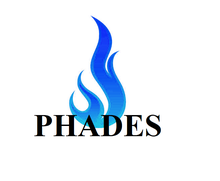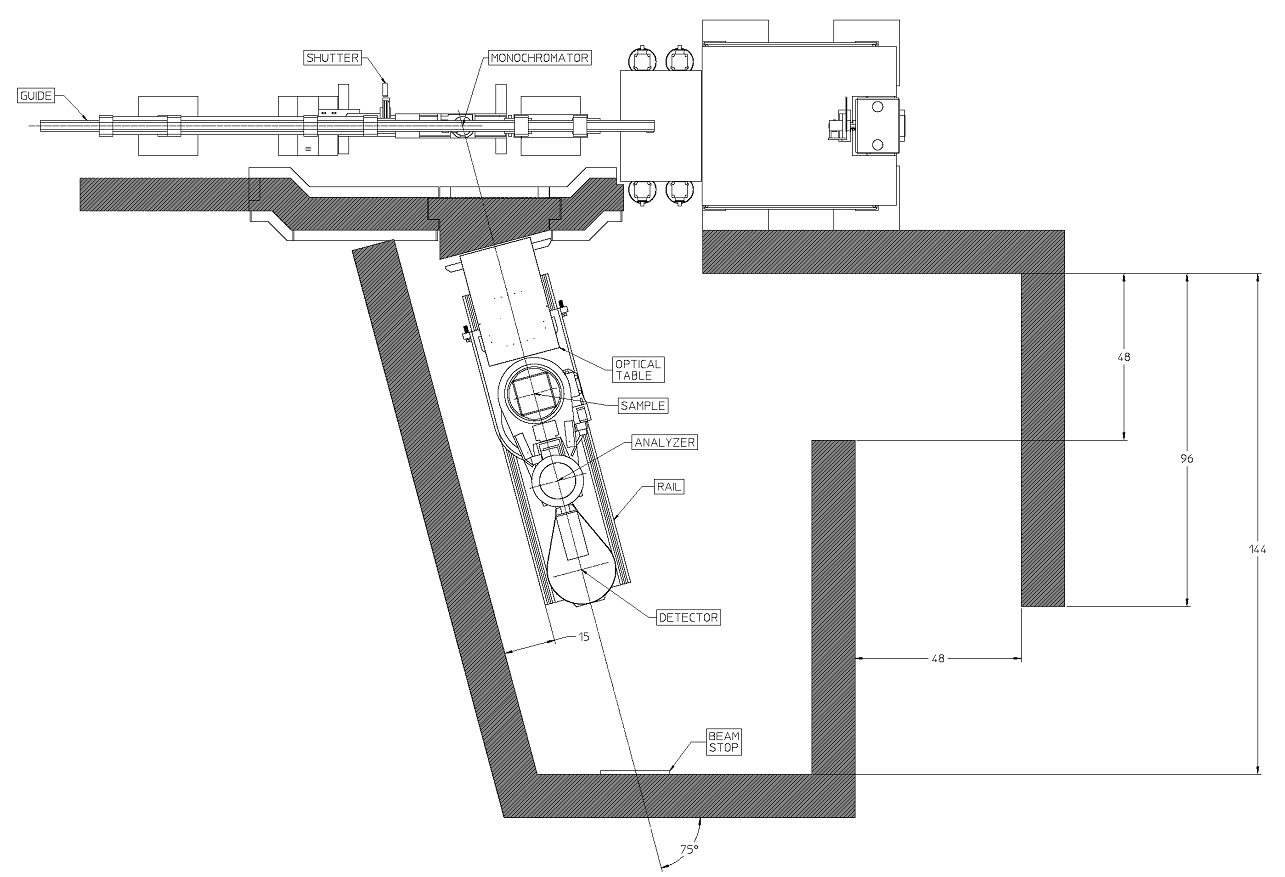Multi-Purpose Test Station - PHADES


PHADES (Polarized 3He and Detector Experiment Station) is typically used for the testing of 3He and related optics, detector optimization, and crystal alignment. A pyrolytic graphite monochromator set at a take-off angle of 75 degrees produces a monochromatic beam of 4.1001(5) \({\unicode{x212B}}\) with fixed energy of 4.8662(6) meV. Flux is relatively low at 2 x 106 \(\frac{n}{cm^2s}\). The vertical divergence of the neutron beam is also small at about 1 degree. The instrument is simply designed, yet highly versatile. It's primary uses are crystal alignment, 3He neutron spin filter testing/development, and detector testing/development.
A series of collimators are available for use. Located at the beam exit, a 25 cm by 75 cm optical table of variable height may be used to support loads up to 100 kg. A second pyrolytic graphite crystal is available for use as an analyzer. Optional removal of the optical table combined with translation of the secondary spectrometer of over 1 m allows large sample environment equipment to be accommodated. Samples are typically mounted on a standard Huber goniometer with ± 22 degree tilt and ± 10 mm translation. Beam to sample heights are 6 inches (152 mm) and 2.75 inches (70 mm) from the Huber base.
A pencil detector (A4) travels from -7 degrees to +150 degrees, providing a maximum Q of 2.96 \({\unicode{x212B}}\)-1 and corresponding minimum sample reflection d-spacing of 2.123 \({\unicode{x212B}}\). Water and air lines are available to support sample environment equipment including electromagnets. Software for hkl crystal alignment is available.
To request time on PHADES please submit a short beam time request through the IMS System. Any questions may be sent to the instrument contacts, listed to the right.

